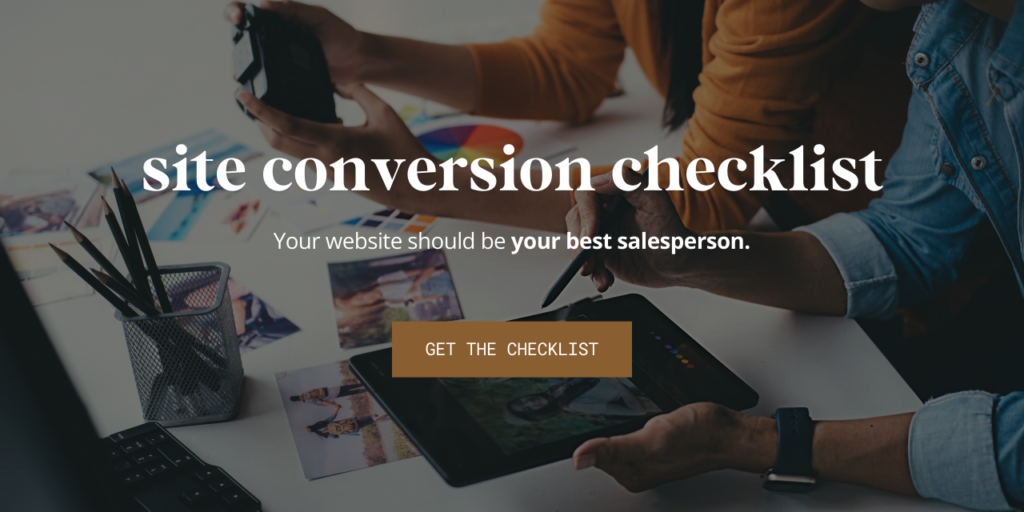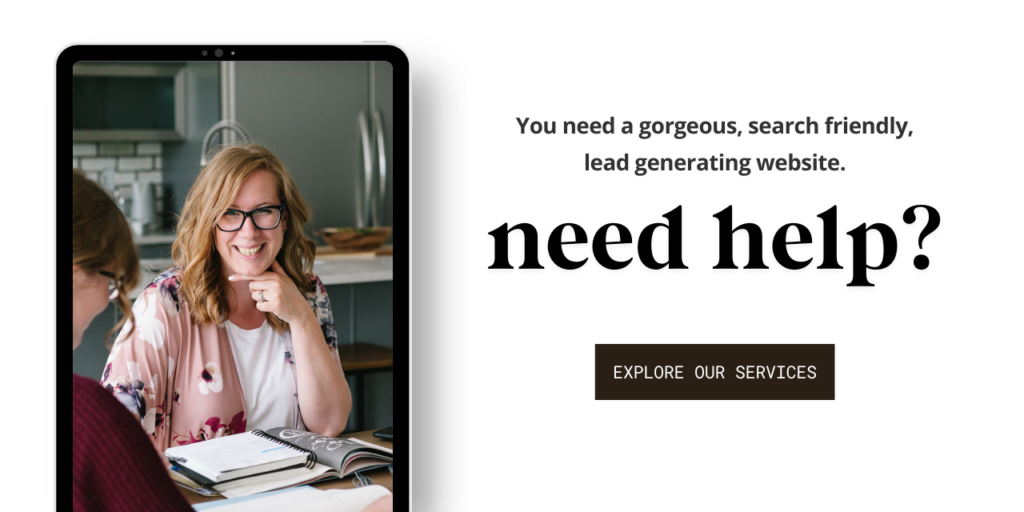Easy SEO tactics to use in 2025 (for real humans)
It’s 2 am and you’re googling what “keyword density” means. Or maybe you’re staring at a page on Neil Patel’s website – no shade, that guy’s a genius. But you feel like you’ve landed on Mars. 🤣 SEO is not easy.
Don’t worry, it’s not just you.
The truth is, you can go a LONG ways with some simple SEO. And the best part? You don’t need a degree in computer science to master it. Let’s break it down. Ready?
Table of Contents
Imagine you own a fabulous boutique. (I mean, that’s the dream, right?)
You’ve got some incredible products, you genuinely give a 💩 about your customers (of course), and it’s got the coziest vibes. But if no one knows where your store is, your products are going to gather dust.
That’s where SEO comes in.
It’s like putting up a big, bright sign that tells people where to find you. When someone searches for what you’ve got, you’re at the top of the list.
So, how does SEO work its magic? It involves a mix of things:
- what people are searching for (keywords)
- how your website is set up (optimization)
- and how other websites talk about you (backlinks)
Let’s break down each of these pieces in a way that won’t make your head spin.
What are keywords and why do they matter?
Keywords are the terms that your person might be searching for. When someone searches for “personalized jewelry,” for example, and your website is optimized with that keyword, you’re more likely to appear in the top search results.
Uncovering the right keywords means you’ve got to use a blend of intuition and research.
Tools like Google Keyword Planner can offer valuable insights – but don’t underestimate the power of understanding your target audience!
What language do they naturally use when searching for products or services like yours?
Just put yourself in their shoes, imagine a google search bar, and imagine what they might type in. That’s the perfect place to start!
The higher the search volume for a keyword (the number of people searching for it each month), the more potential there is to reach your target audience. By aligning your website’s content with the keywords your customers are searching for, you’re setting the stage for increased traffic – and potential conversions!
Optimizing your site – the basics
Pick a keyword (or phrase).
Literally just think about what someone would type into Google to find a business like yours. That’s a great place to start! For example, if you’re a bakery, your keyword could be “best cupcakes in [your city].” Choose one keyword per page of your website.
Write compelling titles & meta descriptions.
Your page title and meta descriptions are like little billboards for your pages in search results. Use your keyword naturally, but also write something that grabs attention.
Optimize your images.
This might sound fancy, but it’s actually quite simple. Give your images descriptive filenames that include your keyword. (For example, “best-cupcakes-[your-city].jpg”)
Boost your website speed.
A slow website frustrates everyone, including search engines. Use a free tool like GTmetrix to test your website speed and get tips on how to improve it.
Don’t worry, you don’t need to be a tech whiz to understand the report!

Local SEO: Reaching Customers Nearby
If you’ve got a brick-and-mortar store, local SEO is crucial for attracting nearby customers. Imagine someone has a cat that absolutely MUST have an aesthetic lunch and they search for “best cat dishes near me” – you want your cozy shop to be at the top of that list!
Google My Business
Google My Business is a free tool that helps you manage how your business appears on Google Search and Maps.
By claiming and optimizing your Google My Business profile, you’re giving potential customers all the information they need, from your address and phone number to your opening hours and customer reviews.
💡 PRO TIP: If you’ve started the process and it’s a pain in the butt and taking ages, it’s not personal – keep at it! Well worth the stress in the end.
Reviews
This isn’t news – reviews build SO MUCH trust and credibility.
Encourage your happy clients to share their experience online. Not only does this boost your local search rankings, but it also gives potential customers valuable insights into what it’s like to do business with you!
The quickest way to the top – content!
In the world of SEO, your content is the foundation of your website and what attracts visitors and keeps them coming back for more.
Here are some key things to keep in mind:
- Quality first! Don’t just churn out content for the sake of it. Think about what problems you can solve for your readers or what information they’re looking for. Offer fresh perspectives, insightful tips, or entertaining stories related to your industry.
- Know your community inside out: Who are you writing for? If you’re selling to moms, talk like a mom. If you’re talking to techies, talk like a techie. What are their pain points? What are they searching for online? People buy from people who speak their language.
Consistency is everything (shocker)
Regularly updating your website with fresh content shows search engines that your site is active and relevant. Aim for a consistent publishing schedule, whether it’s weekly, bi-weekly, or monthly. This also keeps your audience engaged and coming back for more.
The power of backlinks
Backlinks are links from other websites to yours, and Google looks at them like votes of confidence. When a reputable website links to your content, it tells search engines that your site is trustworthy and valuable.
Here’s why backlinks matter:
- They are a major ranking factor for search engines. The more high-quality backlinks you have, the higher your website will appear in search results. This translates to increased organic traffic and potential customers.
Here are some ways to get backlinks:
- Guest blogging on relevant websites. This is a great way to get your content in front of a new audience (which is a win in and of itself!) and earn valuable backlinks.
- Participating in online communities. Share your expertise and insights on forums & social media groups – include links to your website whenever it makes sense!
- Creating high-quality content that others will naturally want to link to. This is the ultimate way to earn backlinks. When you create content that is informative, valuable, and share-worthy, other websites will be more likely to link to it without any prompting from you!

SEO mistakes to avoid
Keyword stuffing: less is more!
You might think cramming keywords into your content is a quick win, but it’s actually a big no-no. Search engines are smart, and they can suss out keyword stuffing a mile away. It makes your website look spammy and harms your reputation. Instead, focus on creating high-quality content that naturally incorporates your target keywords.
Make the mobile version of your site a priority
With more and more people using their smartphones to browse the web, having a mobile-friendly website is essential. If your site isn’t optimized for smaller screens, you’re missing out on potential customers. Make sure your website loads quickly, is easy to navigate, and looks great on any device!
Your site should be simple & clear
Your website should be a welcoming space where visitors can easily find what they’re looking for. We’re not sticking around for a confusing layout, slow loading times, or broken links. Focus on creating a seamless user experience that keeps people coming back for more.
tl;dr
SEO doesn’t have to be rocket science. Focus on understanding your customers, optimizing your website with relevant keywords, and building a strong online presence. Remember, SEO is an ongoing journey, so don’t be afraid to experiment and learn as you go.
Ready to take your online presence to the next level? Let us help you design a website that not only looks stunning but also converts visitors into customers. Our SEO-optimized designs will help your business shine online. Contact us today to get started!





